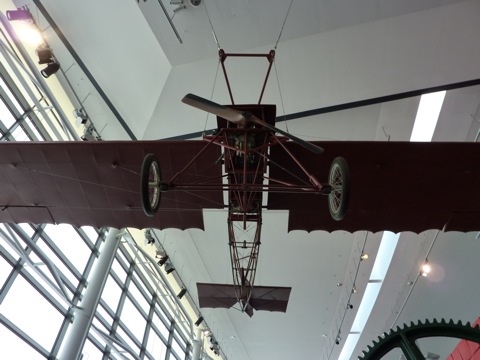
After my day of fortifications I felt it was time for a change of pace, so I headed east for Swansea. The main attraction here (other than the Driver and Vehicle Licensing Agency, of course) is the National Waterfront Museum, which explores the industrial history and technological of Wales. Of which there is quite a lot!
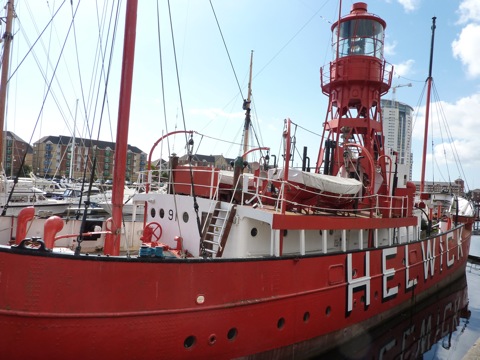
But if you actually approach the museum from the waterfront, the first exhibits you see are actually part of the (separate) Swansea Museum‘s collection (on which, see below). This is Lightship 91, which guarded the Helwick sandbank in the Bristol Channel from 1937. But since it couldn’t move unless it was towed by something else, it should be called a lightbarge.
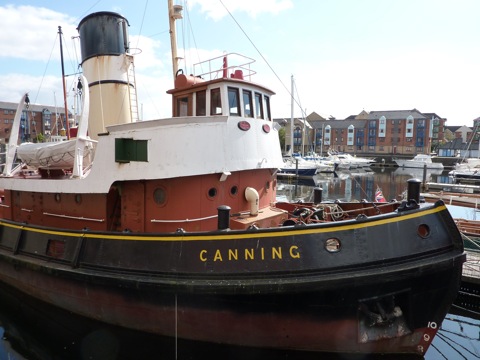
The sort of vessel which might have towed it: a 1950s tug called Canning.

Now to the National Waterfront Museum proper. This was the first mobile shop in Wales, owned and operated by Winston Howard in the Vale of Glamorgan between 1929 and 1969.
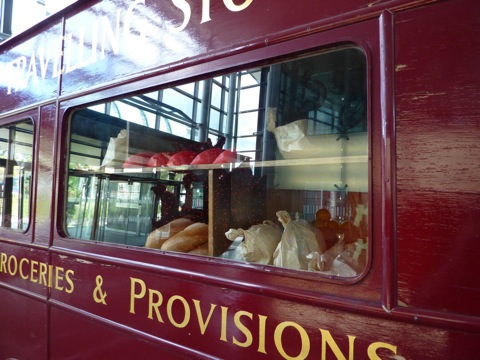
So the idea was that people in rural areas would buy most of their goods from a village shop, but then Mr Howard would come by in his truck and sell them fresh produce, such as milk and fruit. Is this an example of a technological solution/economic niche with a short lifespan, or do people still depend on such mobile shops?
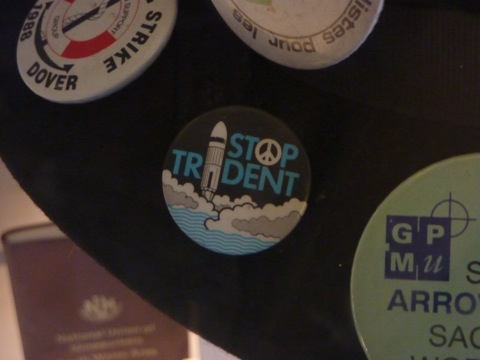
A different relationship to technology is on display here: a hat worn by a Welsh woman on various picket lines, including one protesting the Trident SLBM programme.

Now this interested me (naturally enough). Robin Goch (‘Robin Redbreast’) was designed and built in Cardiff in by an engineer Charles Horace Watkins in 1907 (or 1907-9).

But when did it fly? Watkins claimed that he flew it a number of times up to 1910, possibly as early as 1907, which would make it the first aeroplane to fly (subject to the usual qualifications) in Britain. But there’s no independent verification of this. According to the museum, ‘modern experts’ think it’s airworthy, but the South Wales Aviation Group (which doubts the early flight dates) says it flew often in the 1910s, and was well known to locals. Where’s an aviation historian when you need one?

A replica of Richard Trevithick’s railway locomotive, which ran on the Penydarren tramway on 21 February 1804. This was probably the first ever railway locomotive, and like all great technological innovations was the result of a bet.

I encountered Trevithick on my previous trip to England. He was a quarter of a century before Stephenson, but his locomotives just weren’t efficient enough to beat out more traditional trams and canals.

Still, on that first trip it hauled 10 tons of coal and about 70 humans for 9 miles, which is a pretty good beginning. More impressive than Kitty Hawk, you’d have to say.
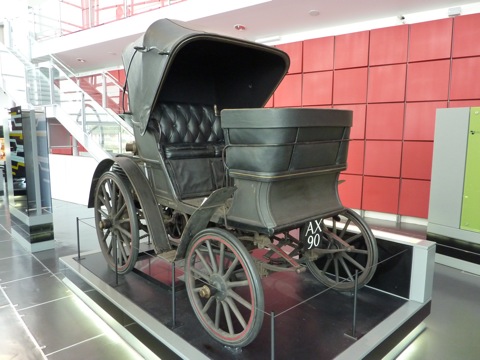
A Benz Duc, which was on Welsh roads in 1904. Fully sick mate, as we say in the Antipodes.
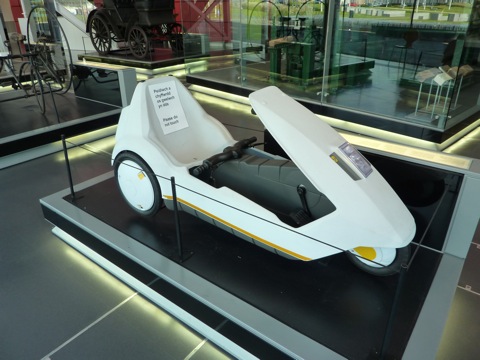
The Sinclar C5, which will be 25 years old on 10 January. The Segway or Flying Flea of its day, which is to say it was supposed to kick off a revolution in personal transportation, but didn’t. The Welsh connection is that they were built at the Hoover factory in Merthyr Tydfil. And I think you can see why.
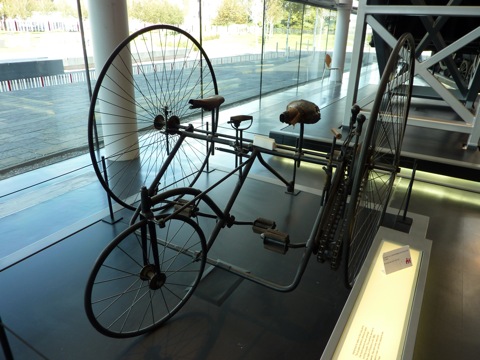
A ‘sociable’ tricycle used in Flintshire in the 1880s. Suitable for use by ladies wearing skirts, unlike penny farthings.

This last piece dates from 1895 and was made by Swansea copper workers as a memento of their group social outings and a dead co-worker. I wonder how many workplaces would do something like this today — a card or perhaps flowers would be more usual I think.
So after the Waterfront Museum I popped into Swansea Museum, a much older (founded 1841), smaller, and more traditional museum. I like this kind of museum, which were originally intended to explain the outside world to the local inhabitants, unlike the big glitzy museums aimed to draw in tourists like the Waterfront Museum. (Not that there’s anything wrong with that.) So, for example, Swansea Museum has an Egyptian mummy, a priest of Atum named Tem Hor, who has nothing to do with Swansea or indeed any other part of Wales. But the kids taken there by their own mummy didn’t seem bothered by (apparently Tem Hor has plenty of more unusual unusual admirers too). It reminded me of the old Museum of Victoria, which had its own mummy, Tjeby.
Some parts of the museum were unfortunately closed, but in the basement there was an absorbing exhibition on criminals and the police who loved to nab them. Definitely worth a visit if you’re in Swansea, and the museum bookshop might turn up a surprise or two as well!
![]() This work is licensed under a Creative Commons Attribution-NonCommercial-NoDerivatives 4.0 International License.
Permissions beyond the scope of this license may be available at http://airminded.org/copyright/.
This work is licensed under a Creative Commons Attribution-NonCommercial-NoDerivatives 4.0 International License.
Permissions beyond the scope of this license may be available at http://airminded.org/copyright/.

I don’t think that the Wright Flyer ever moved any coal. Aviation –the great illusion.
Although there was a coal-powered flying boat in Harry Harrison’s _Transatlantic Tunnel, Hurrah!_ I wonder if we (trying to drag the nephew and neice away from the Wii right now) could get one of those cheap at a Boxing Day sale?
But what of the Driver and Vehicle Licencing Agency?
Sadly, there are only so many hours in day. Maybe next time …